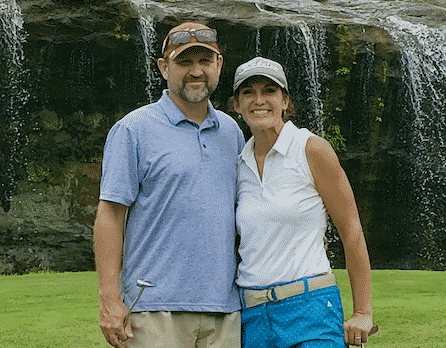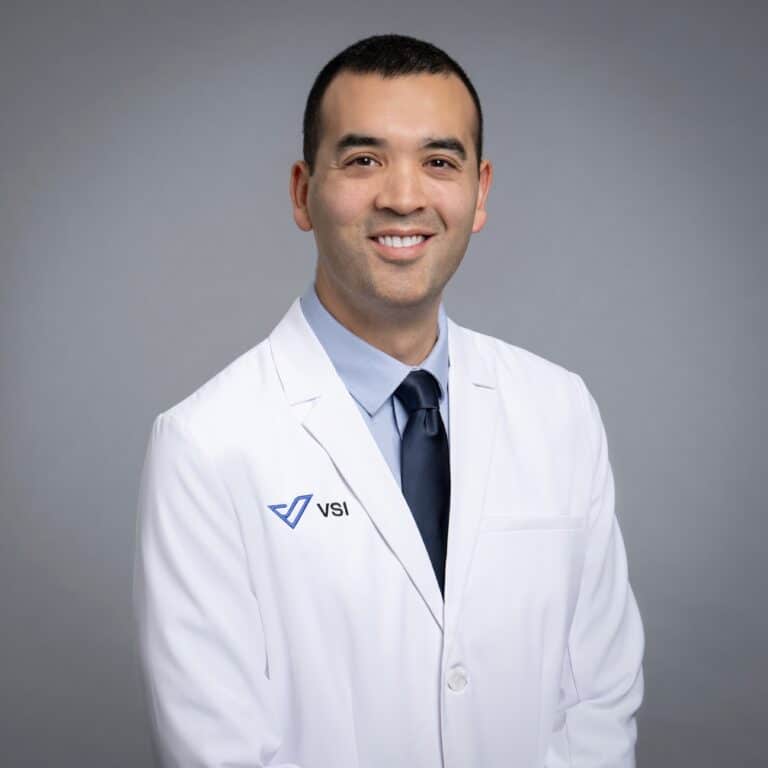
Golfer Overcomes Neck Condition with Disc Replacement Surgery and is Back on the Course Pain-Free
The sun is out, temperatures are up, and for many people – that means it’s time to hit the golf course. Nearly 25 million people are golfing every year. With the repetitive swinging and twisting that’s required for 18 holes, 60% of golfers say they’re playing with injuries, and many of them are finding that pain in their neck and back. VSI’s patient Crystal Smith, from Kentucky, was one of them.
“I have spent my entire life being active and trying to stay healthy,” Crystal said. “I woke up one morning in 2015 with a sore neck. Over the next few weeks, it continued to worsen and I developed severe muscle loss in my left shoulder and arm. This continued on and off for the next two years. As a yoga instructor, I was very limited on ways to maintain the necessary strength. As a golfer, I was hardly able to play. After 9 or 10 holes I lost the ability to hold a club because of nerve damage. I was devastated to think that I might need neck surgery and was unable to find anyone locally who had a positive outcome from neck surgery. My entire family was affected by my chronic pain and we are extremely thankful that it is gone.”
Eventually, Crystal’s nerve pain became so bad she could no longer hold a club, much less swing. Crystal, who was 37 at the time, lives in Kentucky and was told a spinal fusion was her only option. She sought out an additional opinion, found Dr. Colin Haines online, and drove 10 hours to see him. He performed a disc replacement surgery on her neck and it immediately relieved her pain – she was back on the golf course within 4 months.
What is Cervical Disc Replacement Surgery?
If you’re experiencing arm pain (radiating, burning, tingling, and numbness) along with neck pain it’s important to reach out to a spine specialist. That set of symptoms could be a sign of symptomatic nerve or spinal cord compression. If non-operative treatment options like anti-inflammatory medications, physical therapy, exercise, weight loss, or spinal injections don’t fix your problem, it may be time to consider a disc replacement.
A cervical disc replacement can be an excellent option for many candidates. This type of spine surgery involves removing the damaged disc and replacing it with an artificial disc that very closely resembles a human disc’s motion. This modern surgical procedure improves strength, resolving numbness and associated arm symptoms (ie; arm weakness, tingling, burning, numbness). Its success rate is over 95 percent.
What is the difference between a spinal fusion and a disc replacement?
Crystal was concerned that her only option would be a spinal fusion, which can limit motion compared with a disc replacement. These terms can be confusing, especially when faced with multiple options.
When structures are ‘fused’ together, it limits motion; approximately 10 degrees of motion is lost in the neck per level fused. Even so, this is the right option for some people because their spinal segments are so worn out that removing motion is exactly what they need.
But a disc replacement is an attractive alternative for many people suffering from neck pain where motion preservation is desirable. The technology developed for cervical disc replacement seeks to maintain neck motion that is similar to pre-surgical levels after the disc removal. Unlike fusion, maintaining motion in these cases does not add extra stress to the adjacent levels because the forces that occur during motion are evenly distributed across each level (rather than transferred to the adjacent levels), as it is meant to be.
How can I prevent the common aches and pains associated with golfing?
Thankfully, there are preventative steps you can take to promote back health, even as an avid golfer:

1) Warm-up properly
Studies show that most golfers have inadequate warm-ups. Make sure to stretch and hit a few practice balls before you hit the links.
2) Improve your swing mechanics
Don’t try to hit as hard as possible when you step up to the tee. Not only does this cause errant ball placement, but the unnatural effort increases the chance of a back injury.
3) Maintain neutral spine positioning
When leaning over the ball before swinging, keep your spine in its relaxed position of comfort and bend with your hips and knees.
4) Stretch your spine and joints
Studies have shown that golfers who have stiffer back rotation and less joint range of motion have more back pain. This is because stiff players are forcing their bodies to move past the comfort zone, rather than using smooth, fluid motions. Anytime you feel yourself pushing too hard, you probably are.
5) Strengthen your core and give yourself needed rest
Golf requires serious stamina. The majority of back injuries from swinging are due to overuse, so the stronger your core, the more able you are to do repetitive swing. The core is more than abs! Be sure to exercise your hips, glutes, lats, obliques, and In the same line of thinking, don’t push yourself too hard. Resist the temptation to play the back nine if you’re tired after the front.
As for Crystal, she was back to teaching yoga in six weeks. She had her surgery in the winter, and just four months later, she was back to playing golf. Now, four years later – she’s healthy, pain-free, and living life with no restrictions. She and her family play golf two or three times a week and have been able to travel around the country to enjoy some beautiful courses and great games.
“I am extremely thankful for the care and healing VSI provided me,” she says. “My husband and I chose to make the 10 hour trip to VSI because we were unable to get any positive responses locally in Kentucky. It is a decision we would repeat in a heartbeat. After suffering every day, I am extremely thankful for the care and healing they provided me. I am filled with gratitude daily for the positive outcome I have had and I would recommend the VSI to anyone! I’m out there living life now, doing the things I love and I’m pain-free. It’s amazing.”
Topics covered
About the Author
Featured Resources
Insights to Achieve a Pain-Free Life



